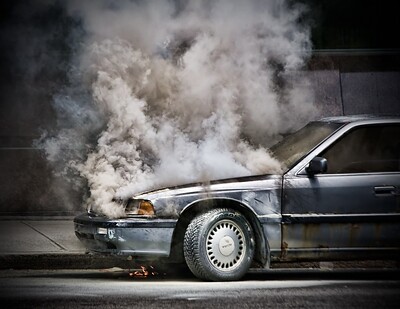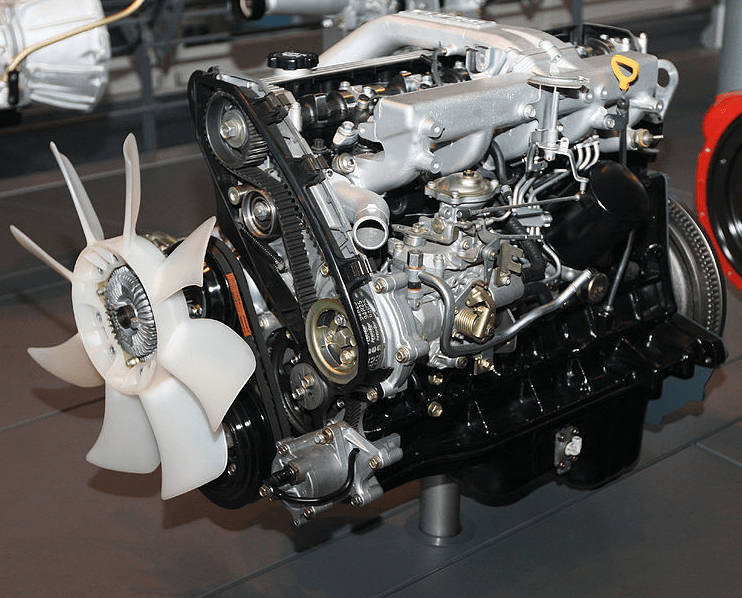As the name suggests, engine cooling system components regulate the vehicle’s engine temperatures.
Well, the way you rely on air conditioners to regulate temperatures, is equal to how the engine relies on these cooling system components.
Though constantly running the air conditioners is one of the reasons why the car consumes more fuel. Because the air conditioner puts more work on the engine.
Think about it, where does the power to accelerate, and at the same time, to power the air conditioner originate? The fuel mixes with air to burn hence giving out power energy. Heat is one of the result of this entire process.
Engine temperature is a big deal especially for high performance vehicles. If you have incorporated any engine modifications to boost performance then the engine’s temperature should be a priority.
Because high temperatures can chock and reduce the outcome obtained from the modifications. Even after undertaking all the right steps, you might still have an issue with engine temperature.
Well, below we will examine all the engine cooling system components that you need to get right. Afterwards, this will put your engine in a cool state whereby you need not to worry about overheating.
Engine Cooling System Components That Prevent Overheating.
Heat produced when the engine is running travels through out the engine. These high temperatures cause the engine parts to seize, warp or score. Hence causing damage to the car and attracting expensive repairs.
Pay attention to the following engine cooling system components to avoid this catastrophic outcome.
Radiator
The radiator is an important part that is made up of different components. Each one plays a key roll in ensuring that the temperatures are regulated within the engine.
How the radiator works.
It makes use of air entering the engine chamber from the vehicle’s movement. This air is pushed through the radiator fins to help in the cooling process.
The radiator is made up of two chambers. That is, the upper and lower chamber. Some also call them tanks. Though this varies from one radiator to another. In fact, some have more than two chambers to increase the cooling capacity.
These chambers separate the heated coolant coming from engine circulation, which cools within the radiator. As well as the cooled coolant headed back into circulation.
The coolant enters the radiator for cooling purposes through the inlet port. Here it finds cold air that lowers the temperatures up to an optimum degree. Remember that it should not be totally cold in order to avoid viscosity issues.
Afterwards, this coolant is transferred to the other chamber where it is held for a while. This creates room for more hot coolant from the engine to be cooled.
The cooled one later exits the radiator through the outlet port back into the engine. Hence the need of having sufficient amounts of engine coolant to avoid overheating.
Electric cooling fan.

The air coming through the front grill into the engine chamber is useful for cooling purposes. The electric fan plays a role in directing the air flow in order to maximize its usability.
As mentioned earlier the radiator usually takes advantage of airflow to perform its function. The electric fan in front of the radiator directs air through the heat exchanger to cool the heated coolant.
The material that makes up the radiator is a high heat conductor. This assists to take heat away from the coolant. Further it helps when cold air comes in for cooling purposes to take heat away from the radiator.
Some vehicles have a computerized fan that switches on when temperatures exceed a designated degree. Other vehicles use a conventional fan that spins as per the engine’s RPM.
Thermostat.
Thermostat initiates the flow of engine coolant. It’s safe to call it the engine’s coolant thermometer. Ever heard someone say that the engine needs to warm-up before they can drive?

Well, don’t get me wrong but this is totally okay during cold weather. But what they didn’t know at that time is that the thermostat measures this heating up.
Afterwards the engine coolant starts flowing through the engine. The purpose of letting the engine to warm up is in order for the coolant to start circulating.
The onboard computer usually senses if the engine coolant is at optimum temperature using the thermostat. Now if the coolant is too hot, the engine temperature dashboard warning light will be displayed.
Immediately the engine starts, there is a possibility that the thermostat is dormant. Car Throttle states that the engine block has to reach 95-110 degrees in order for the thermostat to open. Afterwards, the cooling system jumps into action.
Water Pump.

Its a highly essential part of the engine cooling system components. It starts operating in relation to the thermostat when engine coolant begins to flow within the block.
Once the radiator cools the engine coolant, the water pump uses pressure to pump the cooled coolant back into the engine block. This process begins with the thermostat sensor which initiates the flowing coolant.
There are vehicles that have a water pump which is controlled by engine power. On the other hand, there are water pumps which are activated by the vehicle’s on-board computer. These ones rely on sensors.
Hoses.
They convey the coolant through the cooling process to and from the radiator. Material that make up these hoses is heat resistant hence preventing any leakage.
When servicing the vehicle, don’t forget this crucial engine cooling system component. Basically because if there is a leaking hose, it will lead to overheating of the engine.
Stock hoses are made of basic materials like silicone rubber which is effective for a while. After putting in a long mileage, you are advised to upgrade to aftermarket radiator hoses that are made of higher quality materials.
Hoses connect to the radiator input port as well as the outlet port. Those connecting to the input port will carry hot coolant into the radiator for cooling purposes. Further, the outlet port hoses pump the cooled coolant back into the engine.
Radiator cap.

The radiator has a top which is accessible after removing the cover. The top is covered with a radiator cap which is made specially to regulate pressure.
Because a lot of heating takes place within the radiator chambers. The radiator accumulates pressure originating from cold air running through to cool the heated coolant.
The radiator cap is specially made to withstand this pressure without popping open. There is a need for the pressure to remain within the radiator so that the cooling process occurs accordingly.
Due to the complex make of the radiator cap, there is a possibility that the pressure can be relieved automatically. This prevents excess pressure build-up within the radiator and ensures cooling is optimally done.
Faulty Engine Cooling System Components Causing The Car To Overheat.

Faulty thermostat.
The thermostat waits for the engine block to be warm enough to allow the coolant to flow. The coolant then regulates the temperatures within the engine block.
So, what happens when the thermostat is faulty? The engine block will not receive any coolant even after it has warmed up. This will lead to overheating.
Problematic radiator cap.
The radiator cap is made with a design that takes its functionality into consideration. If the cap isn’t fitted onto the radiator tank properly, there is a possibility that the engine will overheat.
Basically because the radiator relies upon optimum pressure within to perform the cooling function. Now if this pressure is interrupted because of worn out or poor fitting of the radiator cap, the engine overheats.
Faulty head gasket.
The head gasket is usually the part of the engine that prevents engine coolant from flowing outside the engine block. It is fitted according to the engine’s measure to separate the oil cylinders and the coolant chambers.
The head gasket prevents coolant from leaking into the oil chambers and mixing. If this happens, your car will slowly start exhibiting increased engine temperatures.
Because there is insufficient coolant for cooling the engine.
Insufficient Oil.
When oil gets into all the wrong places within the engine, the results are not so good. Oil is good for your engine as it serves for lubrication and cooling.
It is one of the reasons why the car blows so much smoke when it gets into the combustion chamber. When it mixes with coolant due to an issue with the gasket, they form a sludge.
You can check the underside of the oil cup to ensure that your engine oil isn’t mixing with the coolant. If oil is sipping into areas that it’s not supposed to, there is less of it where it should be.
This leaves the other areas without sufficient lubrication. This leads to friction and heat build-up.
Degraded Hosing.
As mentioned earlier, the hose connect to the radiator and the engine block. Their function is to transmit the coolant into and out of the radiator.
The stock hosing is made to last the vehicle through a reasonable mileage. Due to the heated coolant that it handles, you will notice that the hose usually doesn’t maintain it’s quality.
If the hoses quality lowers it means that the hoses cannot handle the heated coolant. So it will lead to a leakage. There will be insufficient coolant within the radiator and engine block hence causing the engine to overheat.


